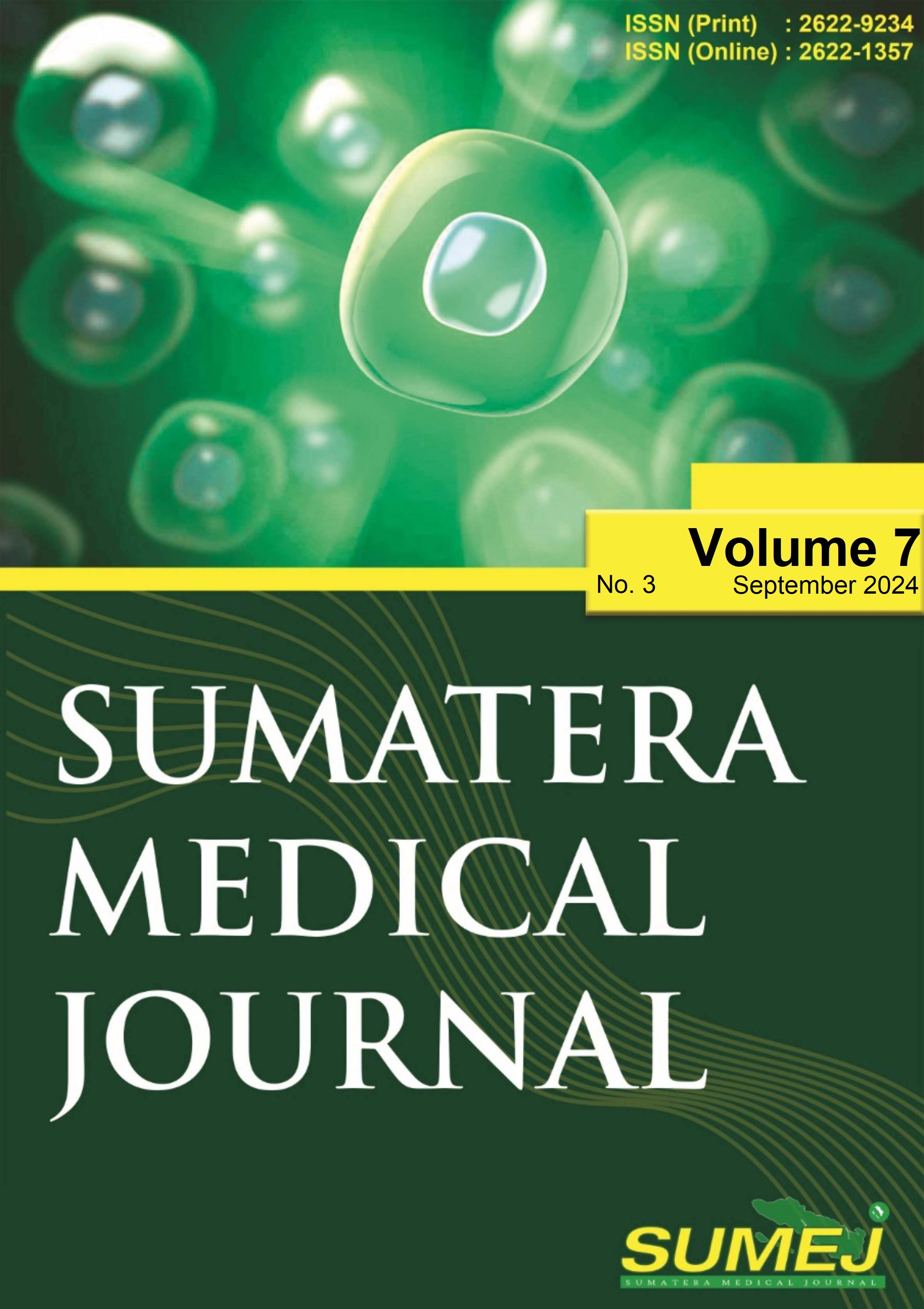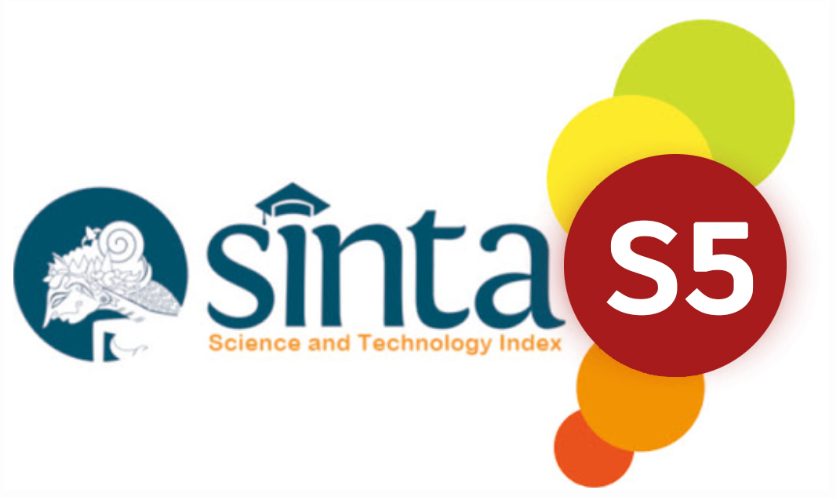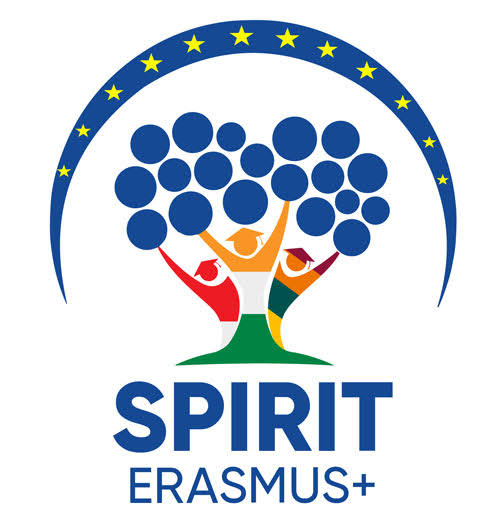Iron Overload Cardiomyopathy
DOI:
https://doi.org/10.32734/sumej.v7i3.17796Keywords:
calcium channel blocker, cardiomyopathy, iron overloadAbstract
Background: Iron overload cardiomyopathy is a condition of excessive iron accumulation in cardiomyocytes due to abnormal iron absorption or repeated blood transfusion. Objective: This literature review was to discuss about iron overload caediomyopathy. Methods: This was a literature revew that explored about iron overload caediomyopathy based on other research. Results: In the early stages, the patient may be asymptomatic with good ventricular systolic function. Iron deposit in ventricular cause dyspnea on effort due to left ventricular systolic dysfunction then in atrial cause atrioventricular block and supraventricular arrhythmic. For severe symptom due to dilated cardiomyopathy is characterized by left ventricular dilatation and risk of sudden cardiac death. Diagnosis of iron overload cardiomyopathy can be made if there is evidence of heart disease, the presence of iron overload (serum ferritin > 300 ng/mL and transferrin saturation > 55%) and cardiac siderosis with cardiac MRI T2 * < 20 ms as gold standard. Patient management involves lowering systemic iron levels and preventing iron entry into cardiomyocytes. Therapy with phlebotomy or iron chelation as indicated. Conclusion: Administration of calcium channel blockers and resveratrol antioxidant therapy may be considered to reduce morbidity and mortality due to cardiac siderosis.
Downloads
References
Aydinok Y, et al. Prevalence and distribution of iron overload in patients with transfusion-dependent anemias differs across geographic regions: Results from the CORDELIA study. Eur J Haematol. 2015;95(3):244–53. Available from: https://doi.org/10.1111/ejh.12487.
Zhang H, Zhabyeyev P, Wang S, Oudit GY. Role of iron metabolism in heart failure: From iron deficiency to iron overload. Biochim Biophys Acta Mol Basis Dis. 2019;1865(7):1925–37. Available from: https://doi.org/10.1016/j.bbadis.2018.08.030.
Chapchap EC, et al. Cardiac iron overload evaluation in thalassaemic patients using T2* magnetic resonance imaging following chelation therapy: a multicentre cross-sectional study. Hematol Transfus Cell Ther. 2023;45(1):7–15. Available from: https://doi.org/10.1016/j.htct.2021.01.014.
Albakri A. Iron overload cardiomyopathy: A review of literature on clinical status and meta-analysis of diagnostic and clinical management using iron chelators. Internal Medicine and Care. 2018;2(1):1–10. Available from: https://doi.org/10.15761/imc.1000117.
Kremastinos DT, Farmakis D. Iron overload cardiomyopathy in clinical practice. Circulation. 2011. Available from: https://doi.org/10.1161/CIRCULATIONAHA.111.050773.
McDonagh TA, et al. 2021 ESC Guidelines for the diagnosis and treatment of acute and chronic heart failure. 2021. Oxford University Press. Available from: https://doi.org/10.1093/eurheartj/ehab368.
Fernandes JL, et al. Amlodipine reduces cardiac iron overload in patients with thalassemia major: A pilot trial. Am J Med. 2013;126(9):834–7. Available from: https://doi.org/10.1016/j.amjmed.2013.05.002.
Oudit GY, Backx PH. Amlodipine therapy for iron-overload cardiomyopathy: The enduring value of translational research. Pulsus Group Inc. 2016. Available from: https://doi.org/10.1016/j.cjca.2015.11.017.
Zhabyeyev P, Sadasivan C, Shah S, Wang F, Oudit GY. Amlodipine rescues advanced iron overload cardiomyopathy in hemojuvelin knockout murine model: Clinical implications. Front Cardiovasc Med. 2023;10:1129349. Available from: https://doi.org/10.3389/fcvm.2023.1129349.
Fernandes JL, et al. A randomized trial of amlodipine in addition to standard chelation therapy in patients with thalassemia major. Blood. 2016;128(12):1555–61. Available from: https://doi.org/10.1182/blood-2016-06-721183.
Khaled A, Salem HA, Ezzat DA, Seif HM, Rabee H. A randomized controlled trial evaluating the effects of amlodipine on myocardial iron deposition in pediatric patients with thalassemia major. Drug Des Devel Ther. 2019;13:2427–36. Available from: https://doi.org/10.2147/DDDT.S211630.
Das SK, et al. Advanced iron-overload cardiomyopathy in a genetic murine model is rescued by resveratrol therapy. Biosci Rep. 2018;38(1):BSR20171302. Available from: https://doi.org/10.1042/BSR20171302.
Paterek A, Mackiewicz U, Maczewski M. Iron and the heart: A paradigm shift from systemic to cardiomyocyte abnormalities. Wiley-Liss Inc. 2019. Available from: https://doi.org/10.1002/jcp.28820.
Kumfu S, Chattipakorn SC, Chattipakorn N. Iron overload cardiomyopathy: Using the latest evidence to inform future applications. SAGE Publications Inc. 2022. Available from: https://doi.org/10.1177/15353702221076397.
Kumfu S, Siri-Angkul N, Chattipakorn SC, Chattipakorn N. Silencing of lipocalin-2 improves cardiomyocyte viability under iron overload conditions via decreasing mitochondrial dysfunction and apoptosis. J Cell Physiol. 2021;236(7):5108–20. Available from: https://doi.org/10.1002/jcp.30219.
Sumneang N, Siri-Angkul N, Kumfu S, Chattipakorn SC, Chattipakorn N. The effects of iron overload on mitochondrial function, mitochondrial dynamics, and ferroptosis in cardiomyocytes. Academic Press Inc. 2020. Available from: https://doi.org/10.1016/j.abb.2019.108241.
Zimmerman MJ, Rosing DR, Shizukuda Y. Advancement of echocardiography for surveillance of iron overload cardiomyopathy: comparison to cardiac magnetic resonance imaging. Springer Japan. 2021. Available from: https://doi.org/10.1007/s12574-021-00524-x.
Carpenter JP, et al. On T2* magnetic resonance and cardiac iron. Circulation. 2011;123(14):1519–28. Available from: https://doi.org/10.1161/CIRCULATIONAHA.110.007641.
Yang G, Liu R, Peng P, Long L, Zhang X, Yang W, et al. How early can myocardial iron overload occur in beta thalassemia major? Plos One. 2014. Available from: https://doi.org/10.1371/journal.pone.0103199.
Atmakusuma TD, Kalwani R, Nasution SA, Rumende M. Correlation of serum ferritin and cardiac iron toxicity with cardiac function in transfusion dependent beta-thalassemia major patients. J Thalassemia. 2021.
Wahidiyat PA, Iskandar SD, Sekarsari D, Wahidiyat PA. Evaluation of iron overload between age groups using magnetic resonance imaging and its correlation with iron profile in transfusion-dependent thalassemia. J Hematol Ther. 2018.
Eghbali A, Mehrabi S, Ghandi Y, Eghbali A, Dabiri M, Mousavi-Hasanzadeh M. Serum markers and cardiac T2* MRI in thalassemia major. The correlation between serum ferritin, serum troponin T, cardiac T2* MRI, and echocardiographic findings in patients with thalassemia major. Int J Blood Cancer. 2020. Available from: www.ijbc.ir.
Downloads
Published
How to Cite
Issue
Section
License
Copyright (c) 2024 Sumatera Medical Journal

This work is licensed under a Creative Commons Attribution-ShareAlike 4.0 International License.
The Authors submitting a manuscript do so on the understanding that if accepted for publication, copyright of the article shall be assigned to Sumatera Medical Journal (SUMEJ) and Faculty of Medicine as well as TALENTA Publisher Universitas Sumatera Utara as publisher of the journal.
Copyright encompasses exclusive rights to reproduce and deliver the article in all form and media. The reproduction of any part of this journal, its storage in databases and its transmission by any form or media, will be allowed only with a written permission from Sumatera Medical Journal (SUMEJ).
The Copyright Transfer Form can be downloaded here.
The copyright form should be signed originally and sent to the Editorial Office in the form of original mail or scanned document.











